Tags: Earth
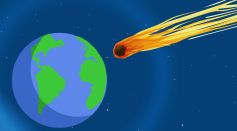
NASA Reveals Plan To Prevent Apocalypse, Defend Earth Against Potentially Hazardous Asteroids
Minimoons: Scientists Explore Transient Earth Companions for Cosmic Exploration Potential

Passing Star May Have Disrupted Earth's Orbit, Leading to Drastic Climate Changes 56 Million Years Ago

Odysseus Lunar Lander Sends Selfies Taken With Earth
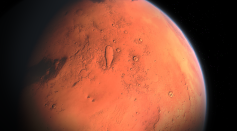
Mars' Unexpectedly Turbulent History Unveils Insights into Diverse Volcanic Activity and Earth's Crustal Dynamics
Communication Woes Threaten Voyager 1: NASA Engineers Struggle to Revive Long-Lived Space Mission
Earth Was a Ball of Ice 700 Million Years Ago, Almost Completely Frozen [Study]

'Cannibal' Coronal Mass Ejection Could Be Moving Toward Earth Following Series of Explosions Over Sun's Surface; Radio Blackouts, Auroras, Power Cuts May Occur
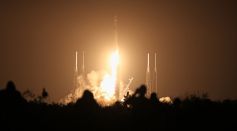
NASA's PACE Mission Successfully Launched to Study Ocean Health, Air Quality, and Climate Impact from Space

Ocean System in the Atlantic That Is Key To Regulating Earth's Climate Could Collapse, Scientists Warn
Massive Sunspot Takes Aim at Earth, Prompting Concerns of a Glancing Blow from Coronal Mass Ejection
Cataclysmic Asteroid Impact May Have Turned Prehistoric Earth Into Snowball State, Study Suggests
ESA's ERS-2 Satellite Retires: Decommissioned Spacecraft Nears Earth's Atmosphere, Prompting Minimal Risk Concerns
Electromagnetic Radiation and Cosmic Rays From Kilonova Could Endanger Life on Earth
Lunar Gold Rush and Moon Mining: Tapping Into Rare Resources for Space-age Technological Revolution
NASA Discovers Super-Earth Planet in Habitable Zone 137 Light Years Away

Earth Was Once Flat 'Like a Smartie' Before Adopting Its Modern Spherical Shape, Researchers Suggest
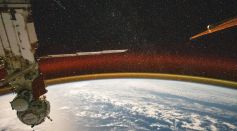
International Space Station Captures Mesmerizing Golden Airglow Above Earth's Horizon
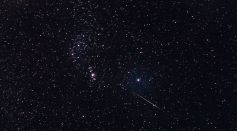
Origins of Geminid Meteor Shower: Unraveling Its Chaotic Birth 18,000 Years Ago

890-Feet Potentially Hazardous Asteroid Is Approaching Earth; NASA Reassures There Is No Risk of Collision
Most Popular

Can We Bring Back Extinct Animals? How De-Extinction Science and Technology Work

Why Do Stars Explode? Supernova Formation and the Final Stage of a Star Lifecycle

The Air Pollution Climate Link: What Environmental Science Reveals About Our Changing Planet

Extreme Heatwaves Explained: What Extreme Heat Science Reveals About Our Changing Climate




